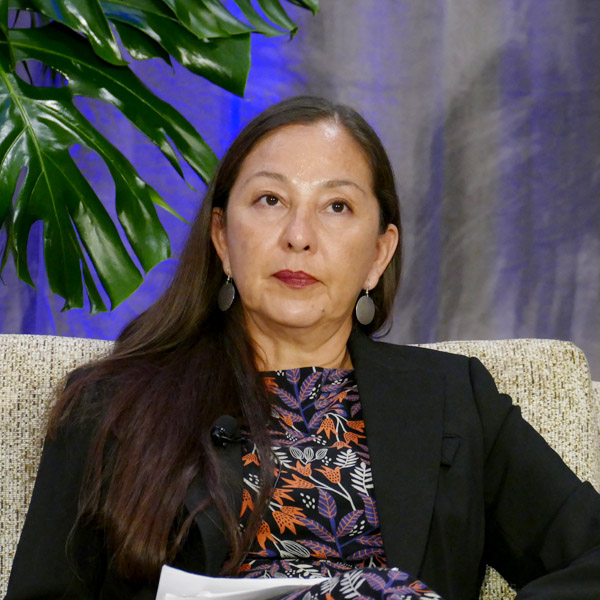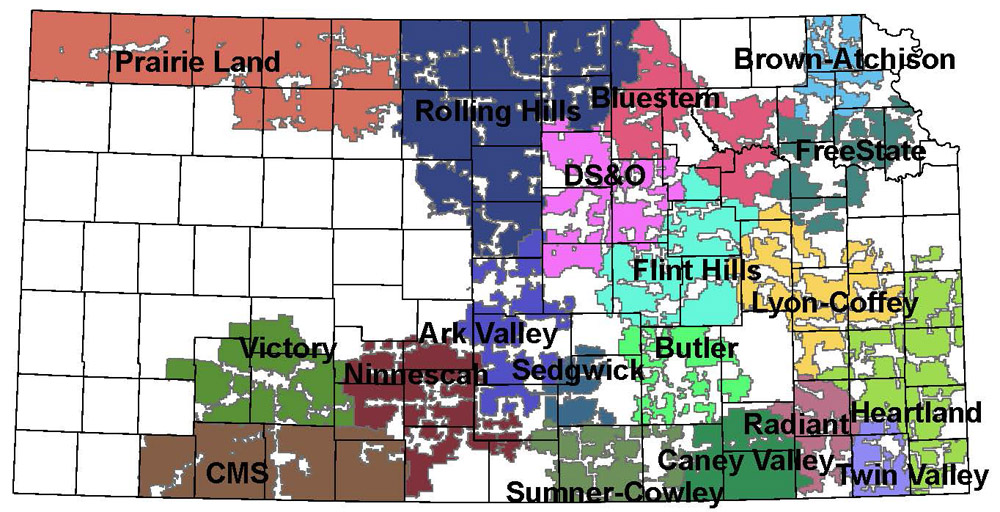ANNAPOLIS, Md. — State lawmakers last week expressed confidence that they will adopt more ambitious climate goals in 2022, saying they have resolved most of the differences between House of Delegates and Senate measures that stalled action last year.
“We are going to pass a climate bill this year,” Senate President Bill Ferguson (D) promised attendees at the Maryland Clean Energy Center’s (MCEC) legislative reception Thursday, during the sixth week of the General Assembly’s 90-day session. “A piece of legislation will be moving forward this year that will be robust and substantial.”
Last year, negotiations to increase the state’s emissions-reduction target collapsed after the Senate rejected House revisions that would have set the state’s 2030 goal at 50% of 2006 levels from the 60% target the Senate favored. (See Md. Climate Bill Dies in House-Senate Standoff.)
Del. Kumar Barve (D), chair of the House Environment and Transportation Committee, said earlier in the week that the two chambers were “working hand in glove” and that only small differences remain between the two versions of the climate package, Maryland Matters reported.
The wide-ranging Climate Solutions Now Act of 2022 (SB0528), sponsored by Sen. Paul Pinsky (D) and more than two dozen other Democrats, would mandate a 60% emissions cut by 2030, while the House legislation would set the deadline in 2032. The current 40% reduction has not been updated since 2016.
Pinsky told a crowd of more than 65 at the MCEC reception that much of the emissions reductions to date have resulted from low-cost natural gas, which has displaced coal-fired generation. “But we’re past low-hanging fruit. It’s time to change the paradigm,” he said, calling for “urgency and boldness.”
In addition to replacing the current GHG goal, Pinsky’s bill would advance the electrification of cars and school buses; ban the use of fossil fuels in newly constructed buildings beginning in 2023; and require commercial and residential buildings larger than 25,000 square feet to reach net-zero emissions by 2040. It also would create a $5 million/year green bank.
The House is considering separate bills on the elements in Pinsky’s legislation.
Pinsky’s bill and several other climate measures were aired during a nearly five-hour hearing of the Senate Education, Health and Environmental Affairs Committee on Feb. 15. Representatives of Exelon’s (NASDAQ:EXC) Baltimore Gas and Electric and Pepco opposed Pinsky’s proposed phase out of natural gas use as too quick and too expensive.
What Future for Gas?
The debate over gas’s future also played out at the MCEC event.
Josh Greene, vice president of government and industry affairs for A. O. Smith, the largest manufacturer of water heating equipment in North America, said his company supports “building decarbonization policies that are pragmatically formulated and executed.”
He said electric heat pump technology for water heaters remains “nascent,” noting that only 100,000 of the 8 million water heaters sold in the U.S. in 2020 were heat pumps.
“Multifuel approaches, from our perspective, are going to be important for us to achieve decarbonization goals,” he said. “It’s very hard for us to see a pathway that’s just one size fits all. So, we need to have flexibility as we move forward.”
But Maryland People’s Counsel David Lapp said the state needs to address the “death spiral” that will result as fewer people are left to pay for gas infrastructure.
He noted that the state is only a quarter of the way through its STRIDE program to replace existing gas infrastructure, with $4.8 billion in spending proposed for future years. BG&E’s cost recovery would extend until the year 2100, he said.
“We need to think about abandonment of parts of the gas system. It sounds significant and radical, but if we don’t start thinking about it, we are going to be facing huge cost consequences down the road for customers, perhaps taxpayers or shareholders,” Lapp said. “The people that can afford to electrify are the ones that are going to move off first. And people on budgets are going to be left on the system and are going to be stuck with higher rates.”
Lapp also called for limiting the role of utilities in electric distribution planning. “If we defer in our electric distribution planning too much to the utilities, we are going to end up spending more money than we need to, and we may not get the products and services that we want,” he said.
Grid planning is the subject of a bill (HB88) sponsored by Del. Lorig Charkoudian (D), who said it would ensure that distribution system planning is consistent with state goals and will allow the state to maximize federal infrastructure funding. “It’s technical; it’s wonky; people in this room love it,” she joked of the bill. “I love you for that.”
Ferguson, Pinsky and Charkoudian were among a parade of legislators and cabinet officials who asked for support of their legislative proposals.
Sen. Benjamin F. Kramer (D) made a pitch for SB 135, which would impose fees on fossil fuels, and SB 126, which would charge purchasers of high-polluting vehicles as much as $450 to fund electric transit and school buses and electric vehicle infrastructure.
‘Not that Far Apart’
Two members of Gov. Larry Hogan’s (R) cabinet also made appearances. Commerce Secretary Mike Gill expressed excitement over the economic development potential of offshore wind. “If we can only achieve 50% of [the jobs] they project … it’s like life sciences 30 years ago,” he said. “I think within the next 10 years, it is probably going to be … easily one of the top eight industries, seven industries, in Maryland.”
Environment Secretary Ben Grumbles dismissed what he said was a “false narrative” that the Hogan administration opposes climate action. “The key message that I want to convey is [that] throughout Maryland and throughout the legislative and executive branches, we are not that far apart,” he said. He noted that Hogan’s top priorities for the current legislative session — his last before his term expires — includes three environmental measures, including financing for Chesapeake Bay restoration.
Grumbles sought to distinguish Hogan from Virginia’s new Republican governor, Glenn Youngkin, who has called for pulling the state from the Regional Greenhouse Gas Initiative. Although he did not mention Youngkin by name. Grumbles said pointedly that Maryland “continues to be a leader” of RGGI. (See Youngkin Takes 1st Steps Toward Va. RGGI Withdrawal.)
State Comptroller Peter Franchot, who is seeking the Democratic gubernatorial nomination, also made a call for bipartisanship in brief remarks. “You know, we’ve got ideologues on the left; we’ve got ideologues on the right, 5% each side. Ninety percent of us are all in this together in the middle.”



